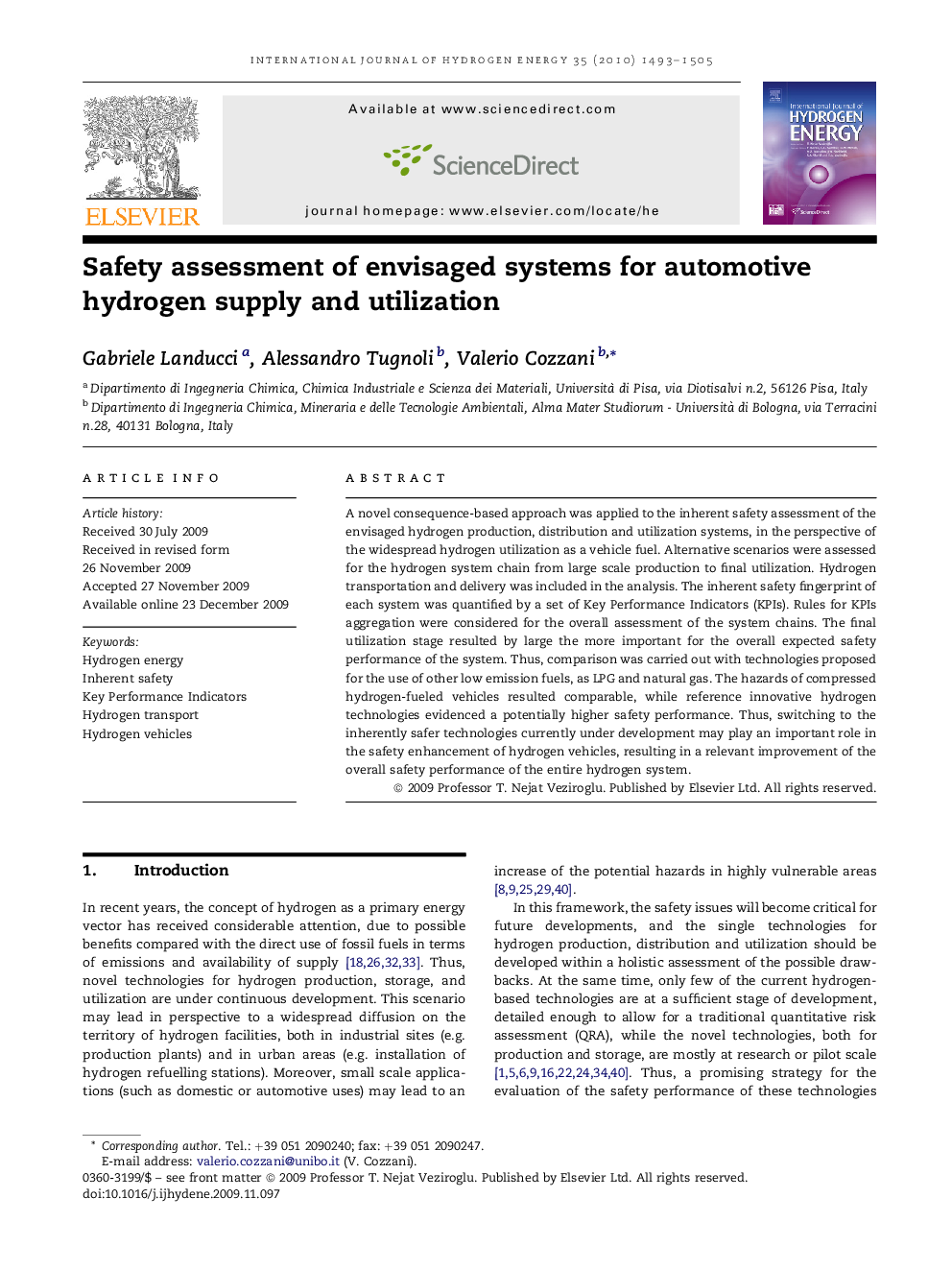| Article ID | Journal | Published Year | Pages | File Type |
|---|---|---|---|---|
| 1273544 | International Journal of Hydrogen Energy | 2010 | 13 Pages |
A novel consequence-based approach was applied to the inherent safety assessment of the envisaged hydrogen production, distribution and utilization systems, in the perspective of the widespread hydrogen utilization as a vehicle fuel. Alternative scenarios were assessed for the hydrogen system chain from large scale production to final utilization. Hydrogen transportation and delivery was included in the analysis. The inherent safety fingerprint of each system was quantified by a set of Key Performance Indicators (KPIs). Rules for KPIs aggregation were considered for the overall assessment of the system chains. The final utilization stage resulted by large the more important for the overall expected safety performance of the system. Thus, comparison was carried out with technologies proposed for the use of other low emission fuels, as LPG and natural gas. The hazards of compressed hydrogen-fueled vehicles resulted comparable, while reference innovative hydrogen technologies evidenced a potentially higher safety performance. Thus, switching to the inherently safer technologies currently under development may play an important role in the safety enhancement of hydrogen vehicles, resulting in a relevant improvement of the overall safety performance of the entire hydrogen system.
